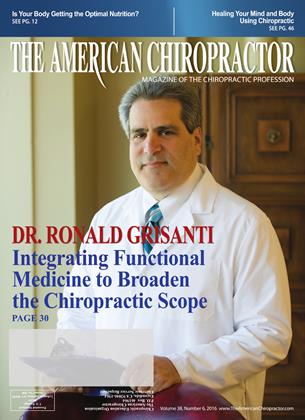Cupcakes and Chiropractic: Making CE Count
REGULATORY CORNER
Kelly R. Webb
My first grader is not a fan of school. She says practicing penmanship makes her hand nauseous and math makes her brain “go boom.” How do you explain to a six year old that, despite the nausea and booming, lifelong learning is crucial? Even after she’s earned a degree and launched her future career (as a cupcake maker), her education won’t stop. It can’t stop if she wants to be any good.
As a healthcare professional, you’re aware of how quickly technology changes and that there aie few careers untouched by science (which, fortunately, my first grader loves). You know how crucial it is for your patients that you stay up to date on the latest findings, techniques, and devices. You know that, without continuing education (CE), it can take 20 years for advances in healthcare research to make their way to common practice. You know that the opportunities for enrichment, networking, and even expanding your practice far outweigh any math-induced brain-booms. Unlike a first-grader, you know how important lifelong learning can be.
Do you also know the qualities that will really make that CE work for you?
My six year old has dreams of baking and decorating fabulous cupcakes. She’s seen pictures in books and can even read a recipe. In her mind, it’s a short step from awareness to mastery; once she’s absorbed simple step-by-step instructions, she’s certain she’s only one buttercream recipe away from sugary perfection.
Is that how CE works for you? Do you think you can you study a journal article, take some notes, submit it as CE time, and suddenly offer your patients better health? Or can you attend a lecture (newspaper in hand), absorb some new information, clock tlie hours with your board, and improve your performance as a practitioner?
There is more to education than just showing up. Studies have repeatedly shown that interactive courses based on demonstrated need improve educational outcomes. Moreover, continuing education that is diverse and immersive has a positive impact on practitioner performance, cognitive ability, and ultimately patient care.
These studies have also shown that it’s completely up to you. It’s up to you to seek interactive courses relevant to your prac-
tice. Courses need to be offered by providers who have a clear avenue for attendee feedback and a demonstrated willingness to listen to that feedback. Effective courses use multiple methods of learning and—when possible—simulate clinical settings. Such courses have an impact on your patients’ lives and make you a better doctor.
When you approach a course not just as a requirement for license renewal but also as having a real purpose in your practice, it becomes a tool for improved patient outcomes. If, however, you’re simply using it to renew your license while you read the newspaper, then you’re missing the point.
CE exposes you to new ideas by taking you from your normal routine and environment, as well as helping prevent burnout. It sharpens your chiropractic skills, refreshes your purpose, and reconnects you with other doctors who aie also putting patient health first in their practices. The whole point of CE is to make you even better at what you do, but not unlike the patient who stales blankly at you while you explain the plan of care strategies, it all depends on you and your commitment.
The bottom line is that when your board asks for your CE verification, they may not be able to tell if you actually learned anything. However, you’ll know, and your patients will know, if you’ve grown as a practitioner or if you’re just scraping butter cream off the ceiling.
Resources for CE:
• Check with your state association — don’t forget to ask other members for their input and advice.
• Look up your alma mater — chiropractic colleges offer a variety of courses, both in-person and online.
• Check out PACE — the F CLB ’s PACE program pre-screens CE for many state licensing boards and pools those offerings on a single website. Check out www.PACEX.fclb.org.
Kelly R. Webb, MA, is a graduate of the University of Northern Colorado andformer writing instructor. She has worked in chiropractic testing and regulation for nearly 15 years and is currently responsible for coordinating the PACE program, developing and maintaining the FCLB websites, and for assisting with writing and correspondence needs of the Federation. (970) 356-3500 kwebhafclh. org
 View Full Issue
View Full Issue






